Why the JPE Test Matters
The Cervical Joint Position Error Test (JPE) is a reliable and validated way to measure cervical proprioception. Research shows that patients with neck pain, whiplash-associated disorders (WAD), or those recovering from concussion consistently perform worse on the JPE Test compared to healthy controls.

Links to Symptoms
Impaired joint position sense is associated with dizziness, unsteadiness, headaches, and visual disturbances — symptoms commonly seen in cervicogenic and post-concussion patients.

Identifies Risk in Athletes
Deficits in cervical proprioception increase the risk of head and neck injuries, including concussion, and may also contribute to other musculoskeletal injuries.

Supports Clinical Decision-Making
JPE results provide objective evidence to detect dysfunction, guide rehabilitation, and document progress — helping clinicians demonstrate treatment effectiveness.
The JPE test made easy
Our Cervical Joint Joint Position Error Test offers clinicians more ease of use and automated documentation, eliminating the need for tools like laser pointers and printouts when performing this well-established test.
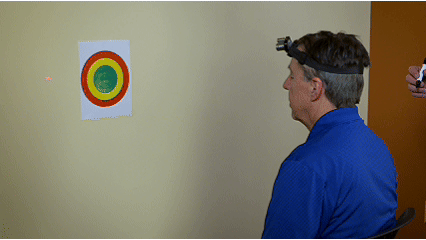
Instant reports
The NeckCare Platform automatically detects the joint position error during each trial and instantly calculates the average error while also reporting on the error in each individual movement plane.
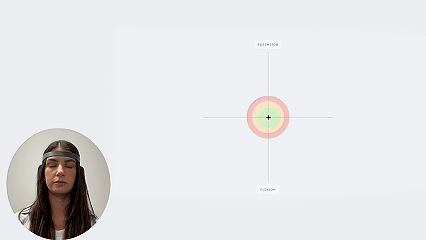
Supports your Documentation and Compliance
Every NeckCare JPE Test automatically generates a standardized report that can be printed, shared, or attached to patient records. Clinicians can confidently use NeckCare™ reports for insurance reimbursement and compliance.
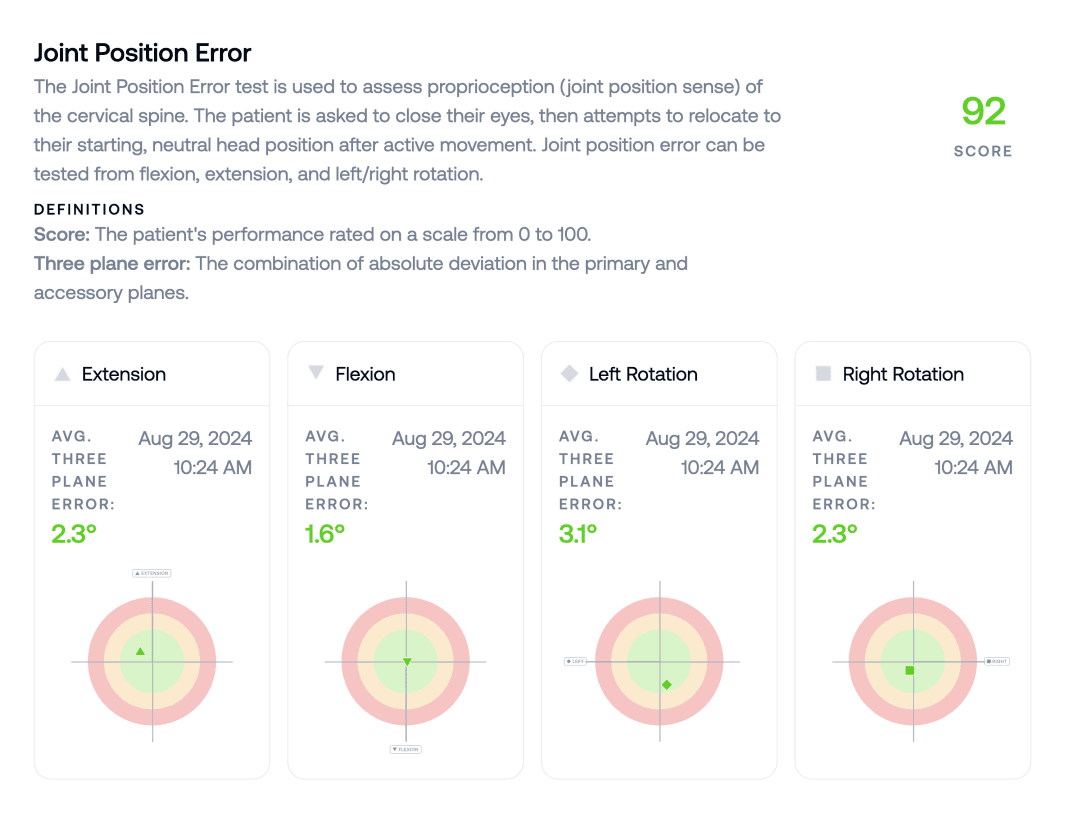
Easy Clinical Setup for the JPE Test
The Cervical Joint Position Error (JPE) Test is designed to be simple to run in any clinic — no special equipment or complicated prep required.
Seat the patient in a chair with back support, feet flat, and hands resting comfortably.
Fit the headgear securely using the adjustment dial so it stays stable during movement.
Position the patient facing a blank wall or computer monitor, depending on the test.
Connect the sensor and you’re ready to begin.
With just the NeckCare™ device and a standard clinic computer, you can complete a JPE Test in minutes
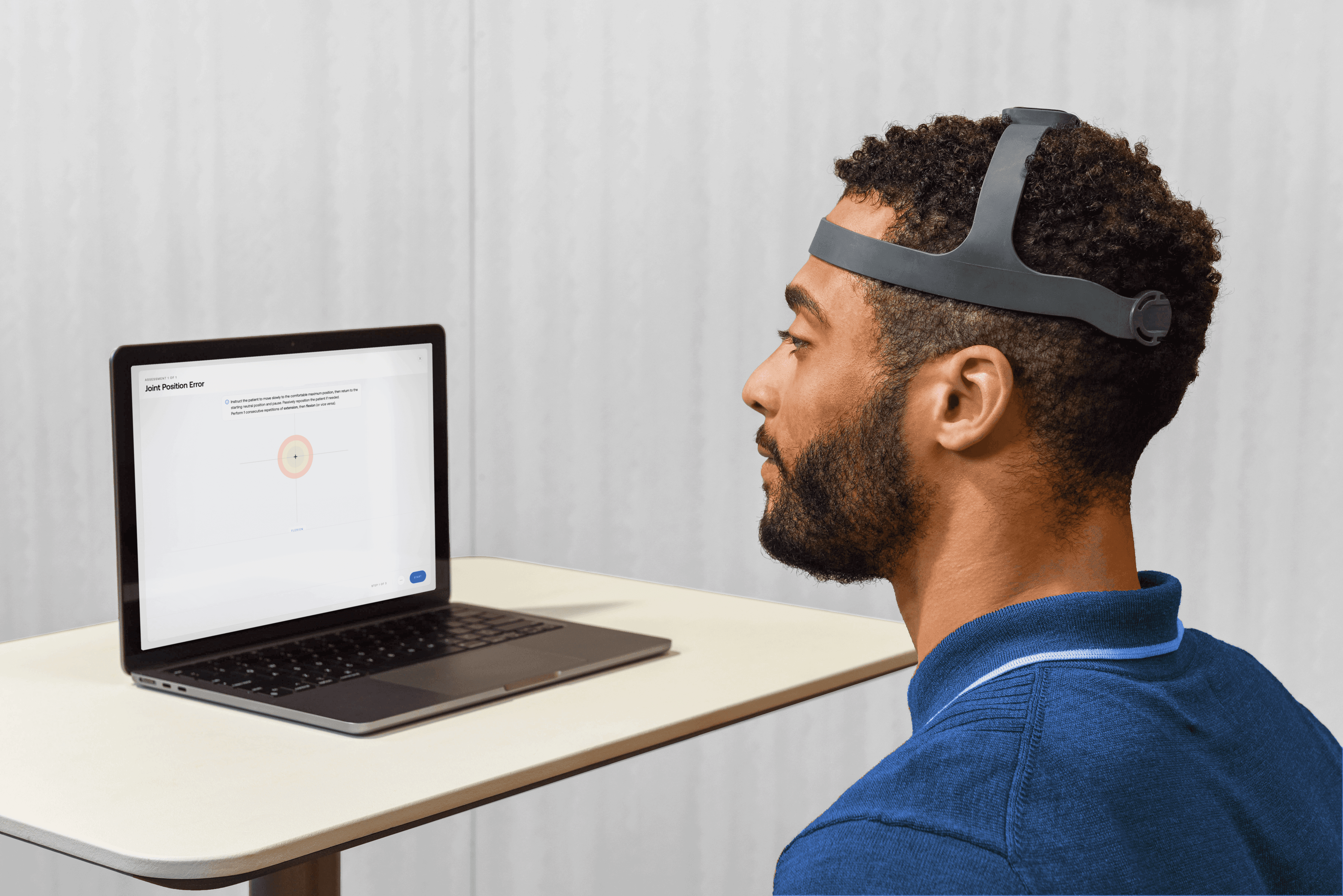
How the NeckCare System™ JPE Test Works
The Joint Position Error (JPE) Test measures a patient’s ability to return their head to a neutral position after movement — a key marker of cervical proprioception. Results are displayed instantly, providing objective data for assessment, rehabilitation, and documentation.
01
Setup
The patient wears the NeckCare™ headgear with the sensor securely positioned.
02
Calibration
The sensor is calibrated through the NeckCare™ Platform to ensure accurate measurement.
03
Assessment
With eyes closed, the patient moves their head (flexion, extension, rotation) and attempts to return to neutral (clinician helps to reposition the patients head.)
04
Analysis
The platform automatically records repositioning accuracy in degrees.
05
Reporting
Results are color-coded against normative values and can be saved, printed, or shared for clinical or insurance documentation.
What You Need to Run a JPE Test
The NeckCare™ System is easy to set up and requires only standard equipment you already have in your clinic.
NeckCare™ Device: Headgear and Bluetooth-enabled sensor.
Computer: Any modern computer with at least 8 GB RAM and a screen size of 7.7” or larger (24” monitor recommended).
Operating System: Windows 10/11 or Mac OS X Yosemite or newer.
Browser: Microsoft Edge or Google Chrome.
Bluetooth: Built-in Bluetooth 5.0 for wireless connection.
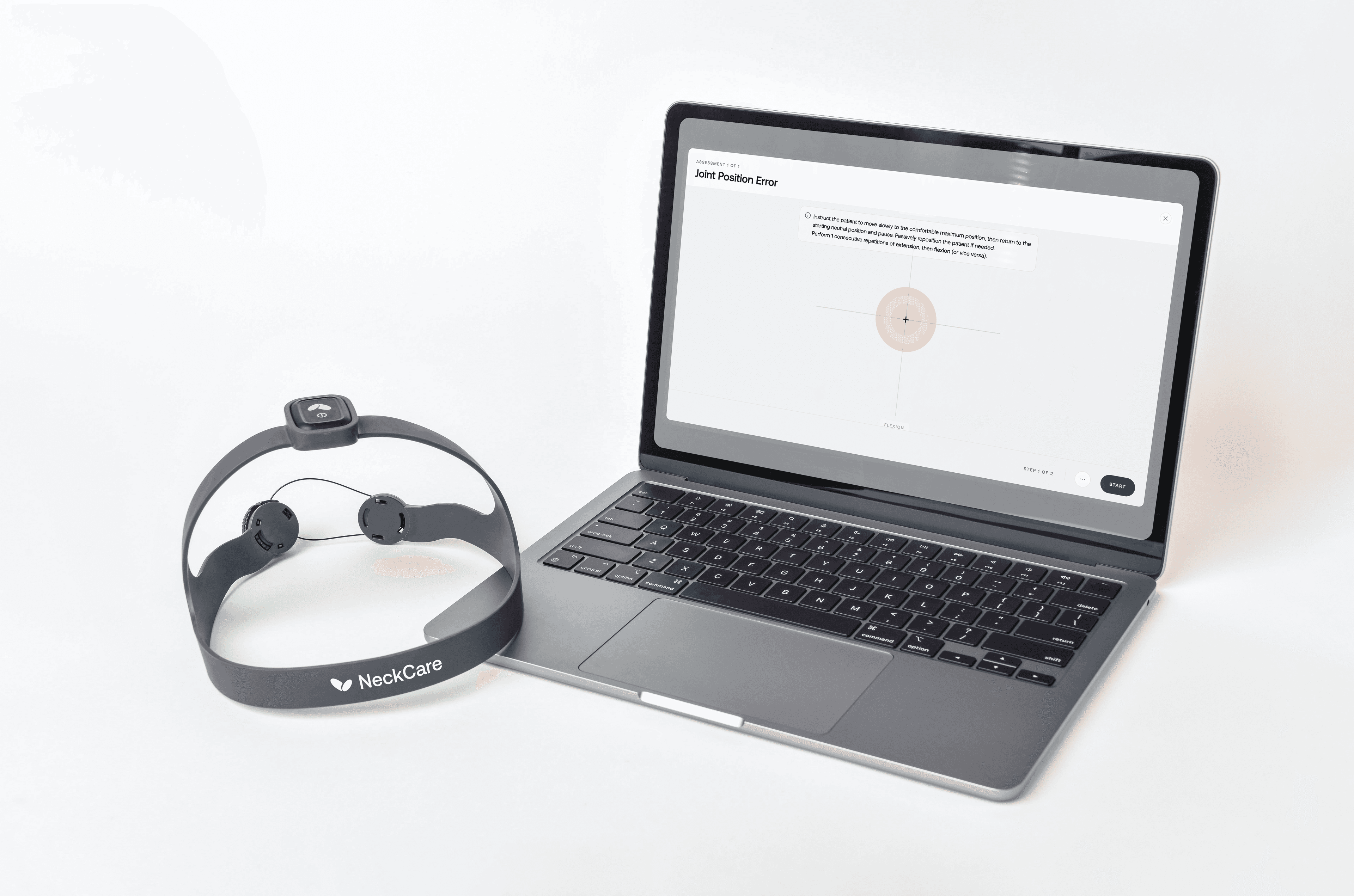
Cervical Proprioception Rehabilitation
After identifying deficits with the JPE Test, clinicians can guide patients through targeted JPE Exercises to improve cervical proprioception and track their progress session by session.
CPT 97110, 97112 and billing per session.

ASSESSMENT
Joint Position Assessment
The patient is asked to close their eyes, then attempts to relocate to their starting, neutral head position after active movement.
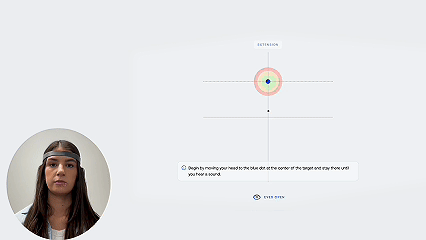
EXERCISE
Joint Position Sense Exercise
The patient attempts to relocate their head back to an initial neutral position, training joint position sense, an important component of proprioception.
Hover over and click on the report below to see the assessment data and how it works.
Each JPE measurement is displayed on a bullseye target, with target size determined by normative data derived from a clinical trial using the NeckCare System with healthy subjects.
Try it out
Hear from our customers
NeckCare is at the forefront of cervical proprioceptive testing. The have the best team of clinicians advising the development of the technology, and it shows in the assessments and reporting features. Very happy to be using the NeckCare System in my clinical procedures.

Dr. John Stenberg
DC, Owner at Zenith Upper Cervical Chiropractic
Before NeckCare, connecting symptoms like dizziness or headaches to the neck was challenging, especially for patients without neck pain. Building buy-in for neck-focused rehab was difficult. The NeckCare System changed everything. Objective data now clearly shows patients, 'This is why you’re dizzy' or 'This is why you’re having headaches,' transforming their understanding and confidence in the care plan. Patients see the connection, track their progress, and commit more fully to rehab.

Dr. Mark Heisig
ND, Concussion Specialist at Arizona Vitality






